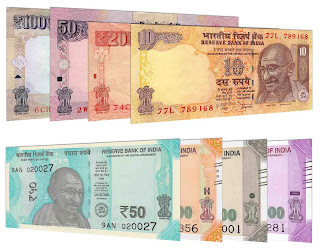New Currency In India
Title: Exploring the Potential of a New Currency in India: A Paradigm Shift in Economic Landscape
Introduction:
The concept of a new currency in India has been a subject of debate and speculation in recent times. As the world rapidly evolves, nations are exploring innovative approaches to address economic challenges, promote financial inclusion, and leverage emerging technologies. This content delves into the potential implications, benefits, and considerations surrounding the introduction of a new currency in India.
Section 1: Rationale and Objectives
1.1 Economic Stability and Control: A new currency could be introduced to enhance economic stability, curb inflation, and provide greater control over monetary policies.
1.2 Financial Inclusion: It offers an opportunity to design a currency that promotes financial inclusion, ensuring access to banking services for the unbanked population and reducing income disparity.
1.3 Technological Advancements: A new currency could leverage emerging technologies such as blockchain, enabling faster, secure, and transparent transactions, thereby streamlining the financial ecosystem.
Section 2: Implementation Challenges and Considerations
2.1 Transition Period: Introducing a new currency involves a complex transition process, necessitating careful planning and coordination to minimize disruption and ensure a smooth transition for individuals and businesses.
2.2 Infrastructure and Adoption: The success of a new currency relies on robust infrastructure, including ATMs, payment gateways, and digital platforms, as well as public acceptance and adoption of the new currency.
2.3 Security and Counterfeiting: Designing advanced security features and implementing stringent measures would be crucial to safeguard against counterfeiting and fraudulent activities.
Section 3: Potential Benefits and Opportunities
3.1 Monetary Policy Flexibility: A new currency could offer increased flexibility in implementing monetary policies, enabling the government to respond more effectively to economic challenges.
3.2 Cost Savings and Efficiency: Leveraging technology, a new currency can streamline transactions, reduce administrative costs, and enhance efficiency in financial operations.
3.3 Financial Innovation: The introduction of a new currency could foster financial innovation, encouraging the development of innovative financial products and services that cater to the evolving needs of individuals and businesses.
Section 4: Public Perception and Acceptance
4.1 Trust and Confidence: Gaining public trust and confidence in a new currency would be crucial. Transparent communication, education, and a gradual approach could help mitigate uncertainties and foster acceptance.
4.2 Cultural and Emotional Attachments: The cultural and emotional attachments people have with existing currency should be considered, and efforts should be made to honor and preserve the heritage associated with the current currency.
Section 5: Global Impact and Collaboration
5.1 International Trade and Exchange Rates: Introducing a new currency would have implications for international trade and exchange rates, requiring careful considerations to maintain stability and competitiveness.
5.2 Collaboration with Global Financial Institutions: Collaboration with international financial institutions and regulatory bodies would be vital to ensure seamless integration and compliance with global financial frameworks.
Conclusion:
The introduction of a new currency in India presents an opportunity to reshape the economic landscape, promote financial inclusion, and leverage technological advancements. While the potential benefits are promising, careful planning, collaboration, and public acceptance are critical to the success of such an endeavor. A comprehensive approach, addressing economic stability, infrastructure, security, and public sentiment, is vital for realizing the potential of a new currency and ushering in a new era of economic growth and prosperity.







